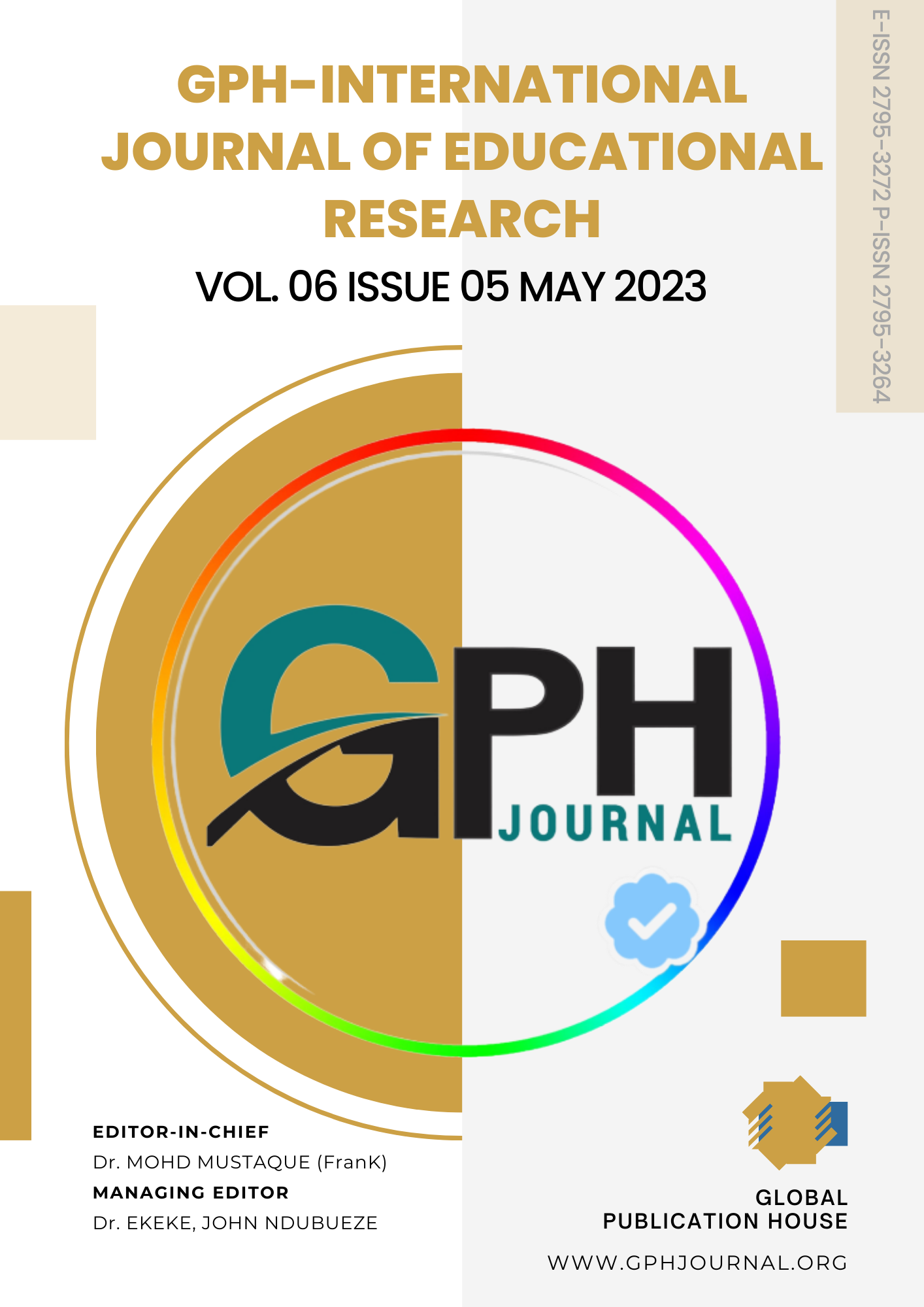AN APPRAISAL OF STUDENTS’ ACADEMIC PERFORMANCE AND RETENTION IN PHYSICS USING ICT-BASED TEACHING STRATEGIES
Abstract
The study was carried out to appraise the impact of ICT-based teaching methodologies (video-taped instructions and Power Point presentations) on academic performance and retention of secondary school students in Physics. The study was conducted in Cross River State, Nigeria with a quasi-experimental research design using non-randomised pre-test and post-test control group. The sample for the study consisted of 176 SS2 students drawn from four intact classes of four secondary schools within the study area. Physics Achievement Test (PAT) with a reliability coefficient of 0.85 was used for data collection.Mean and Analysis of Covariance (ANCOVA) was used in the treatment of the obtained data. The results of the study showed that there was a significant difference in the academic performance and retention of students taught using video-taped instructions and those taught using power point presentations. Findings of the study showed that students taught using video-taped instructions had a higher academic performance and retention than those taught using power point presentations. The study concludes that the use of blended ICT-based teaching methods can improve learner’s academic performance and retention.
Downloads
References
Cruse, E. (2007). Using educational video in the classroom: Theory, Research and Practice. Retrieve from
https//www.safarimontage.com/pdfs/training/UsingEducationalVideoinTheClassroom.pdf(3/2/2009).
Corporation for Public Broadcasting (CPB). (2004). Television goes to school: The impact of video on student learning in formal education. Available: http://www.cpb.org/stations/reports/tvgoestoschool/
Gürbüza, H., Kisoglu, M., Erkola, M., Alaú b, A. and Kahramanc, S. (2010). The effect of PowerPoint presentations prepared and presented by prospective teachers on biology achievement and attitudes toward biology. Procedia-Social and Behavioral Sciences, 2: 3043–3047
Hopson, M.H., Simms, R.L. & Knezek, G.A. (2001-2002). Using a technology-enriched environment to improve high-order thinking skills. Journal of Research on Technology in Education, 34(2): 109-119
Lari, F.S. (2014).The impact of using power point presentations on students' learning and motivation in secondary schools. Procedia - Social and Behavioral Sciences, 98: 1672 – 1677.
Karen, C. (2014). Differences between traditional data processing and semantic web.https://kcoyle.net/presentations/(Accessed on 30th October2015).
Mayer, R.E. (2001). Multimedia learning. Cambridge: Cambridge University Press.
Nouri, H., and Shahid, A. (2005). The effect of PowerPoint presentations on student learning and attitudes. Global Perspectives on Physics Education, 2(6): 53-73.
Ramon, C.P., Antoni, C.T.,, Madel , M., Maria, C. (2013). Efects of the PowerPoint methodology on content learning. Intangible Capital, 9(1): 184-198 –http://dx.doi.org/10.3926/ic,370
Savoy, A., Proctor, R.W.; Salvendy, G. (2009). Information retention from PowerPoint and traditional lecture. Computers and Education, 52: 858-867. http://dx.doi.org/10.1016/j.compedu.2008.12.005
Copyright (c) 2023 Francis D. Eyenaka, *Gabriel Ocheleka and Aniedi A. Udo

This work is licensed under a Creative Commons Attribution-NonCommercial-NoDerivatives 4.0 International License.
Author(s) and co-author(s) jointly and severally represent and warrant that the Article is original with the author(s) and does not infringe any copyright or violate any other right of any third parties, and that the Article has not been published elsewhere. Author(s) agree to the terms that the Global Publication House will have the full right to remove the published article on any misconduct found in the published article.























